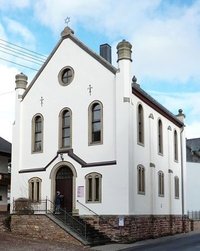The shofar is a horned instrument with ritual significance, blown on special occasions and according to the mitzvot (commandments) set forth in the Holy Scriptures. It is made from the horn of a ram or goat, or rarely an antelope, and symbolizes the near-sacrifice of Isaac, in whose place a ram was sacrificed by Abraham. The bone marrow is removed, the horn is hollowed out and the tip is cut off – with the opening serving as the mouthpiece. The Torah and the Talmud give precise instructions on how to blow the shofar and stipulate the tone sequences that take on specific meaning for the various occasions.
The shofar has particular significance for the festivities associated with „Rosh Hashanah“, the Jewish New Year festival, referred to in the Torah as „Yom Teruah“ or „The day of sounding the trumpets”. These days are set apart to take stock of the moral and religious life one has led over the past year and to turn to God in prayer for the future. Blowing the shofar is interpreted as a symbolic prompting for self-introspection and as a wakeup call from a “preoccupied” way of life. The „ten days of repentance“ are initiated with Rosh Hashanah; these are days of reflection and reorientation that culminate with the day of atonement „Yom Kippur“. These, too, are accompanied by the sound of the shofar.
de

